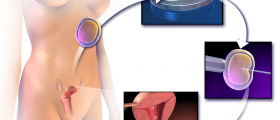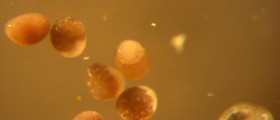IVF success rates could improve dramatically with the help of a new test that examines the genetic material in embryos during the preimplantation stage. The test, developed by British company Blue Gnome, could increase IVF pregnancy rates by as much as 65 percent. A study probing into the test was just published in the journal Molecular Cytogenetics.

Although IVF is almost seen as a normal, everyday thing to do these days, the technology is still rather complex, and many things can go wrong. Below age 35, IVF success rates are at about 33 percent. Like with natural pregnancy chances, these odds gradually go down, and by age 45 a woman only has a one in 2o chance of conceiving through IVF.Of of the reasons for lower success rates is that problems with the amount of chromosomes in an embryo can occur normal embryos inherit 23 chromosomes from each parent. IVF carries higher chances of chromosomal abnormalities, but in the majority of cases implanted IVF embryos who have these abnormalities simply will not develop. That would mean that the woman did not stay pregnant.
The Blue Gnome test takes some cells from embryos on day five of their development, and subsequently implanting only embryos who had the normal amount of chromosomes. While this procedure doesn't eliminate the risk of all birth defects, it does boost the pregnancy rate by avoiding the implantation of embryos who would have no chance of developing.
Stuart Lavery, a consultant gynaecologist and director of IVF at Hammersmith Hospital, told the BBC that the idea of preimplantation embryonic testing had been around for many years, but that he was very excited about this test actually being developed. He said: "The study not only increased pregnancy, but by putting back just one embryo. This test may mean you can use single embryo transfer and get a really good success rate."
Are you thinking about having IVF? In the near future, your success chances could go up a whole lot!
You may also like to read about how twin IVF embryos "help each other" survive.
- www.nhs.uk/news/pregnancy-and-child/acupuncture-and-success-of-ivf/
- www.nhs.uk/news/pregnancy-and-child/hormonal-fertility-tests-waste-time-and-money/
- Photo courtesy of Trending Topics 2019 by Flickr: www.flickr.com/photos/146269332@N03/48626627543/








_f_280x120.jpg)







Your thoughts on this
Loading...